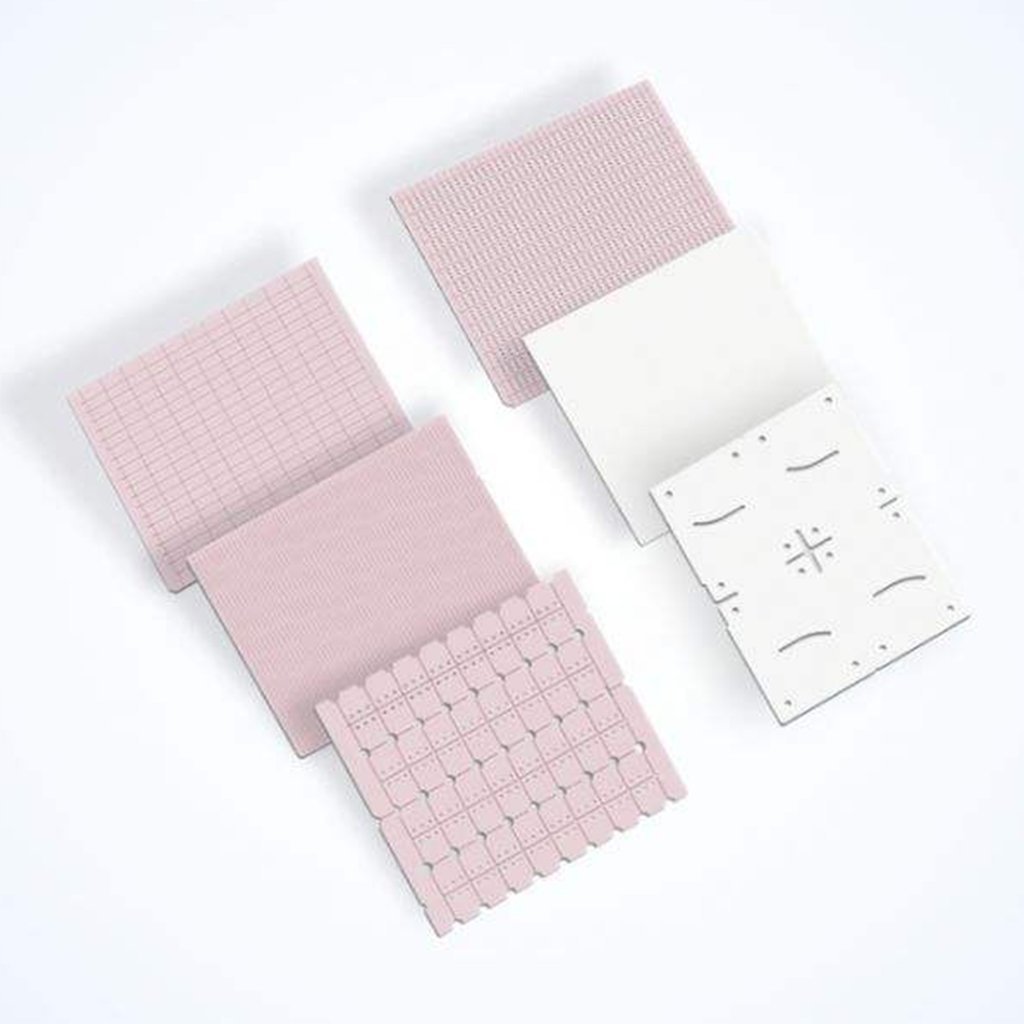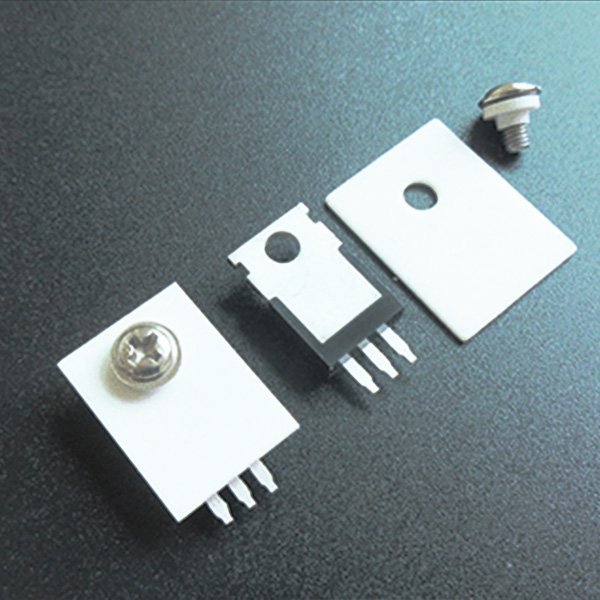1. Integrated circuit (IC) packaging:
Alumina ceramic substrates are often used in IC packaging as the base of the chip. They provide good insulation and thermal conductivity properties, which can support and isolate the chip, and help effectively dissipate heat to ensure stable operation of the chip. For example, in the packaging of high-performance microprocessors, alumina ceramic substrates are widely used.
2. Multilayer printed circuit board (PCB):
Alumina ceramic substrate can be used as the base material of high-frequency circuit boards. In high-frequency electronic equipment, such as wireless communication systems and radar systems, circuit boards are required to have low dielectric loss and good high-frequency performance. The high dielectric constant and low loss tangent of alumina ceramic substrates make them an ideal choice.
3. High-power electronic devices:
Alumina ceramic substrates are widely used in high-power electronic devices. For example, equipment such as power modules, power converters and inverters need to handle higher power and heat. The excellent insulation properties, high temperature resistance and good heat dissipation properties of the alumina substrate enable it to isolate electronic components and effectively conduct heat, ensuring the reliability and performance of the equipment.


4. LED packaging:
Alumina ceramic substrate plays an important role in LED packaging. LED chips are typically mounted on an alumina substrate to provide structural support and thermal management. The alumina substrate has excellent thermal conductivity, helping to effectively dissipate heat and improve the brightness and life of the LED.
5. Integrated circuit (IC) packaging:
Alumina ceramic substrates are often used in IC packaging as the base of the chip. They provide good insulation and thermal conductivity properties, which can support and isolate the chip, and help effectively dissipate heat to ensure stable operation of the chip. For example, in the packaging of high-performance microprocessors, alumina ceramic substrates are widely used.
6. Multilayer printed circuit board (PCB):
Alumina ceramic substrate can be used as the base material of high-frequency circuit boards. In high-frequency electronic equipment, such as wireless communication systems and radar systems, circuit boards are required to have low dielectric loss and good high-frequency performance. The high dielectric constant and low loss tangent of alumina ceramic substrates make them an ideal choice.
7. High-power electronic devices:
Alumina ceramic substrates are widely used in high-power electronic devices. For example, equipment such as power modules, power converters and inverters need to handle higher power and heat. The excellent insulation properties, high temperature resistance and good heat dissipation properties of the alumina substrate enable it to isolate electronic components and effectively conduct heat, ensuring the reliability and performance of the equipment.
8. LED packaging:
Alumina ceramic substrate plays an important role in LED packaging. LED chips are typically mounted on an alumina substrate to provide structural support and thermal management. The alumina substrate has excellent thermal conductivity, helping to effectively dissipate heat and improve the brightness and life of the LED.
The superior properties of alumina ceramic substrates make them a key component of many electronic devices, providing increased reliability, stability and performance.

FAQ
Can you provide samples for me to test? How much does it cost?
We strive to provide ceramic samples that closely meet your requirements to the best of our abilities.
The samples are completely free, but you need to pay the freight.
For samples with unique shapes that require custom molds, we are open to discussing the mold cost in order to accommodate your specific needs.
We don’t know which material of ceramic we need, what should we do?
No worries! Please provide us with more details about your requirements, such as the intended use, desired properties, and any specific characteristics you're looking for.
With these information, our team can guide you in selecting the most suitable ceramic material for your needs.
We are concerned about the quality of the product we ordered.
We understand your worries and we maintain stringent quality control standards as following:
| Test Standard | Testing Dimension | Pass Rate | Standard Range |
|---|---|---|---|
| Appearance Inspection | Quantity and Severity of Defects | ≥ 97.3% | Determined by AQL standard |
| Dimensional Inspection | Size Accuracy and Consistency | ≥ 98.1% | Determined by ISO 9001 standard |
| Density Testing | Material Density | ≥ 97% | Determined by ASTM C20 standard |
| Hardness Testing | Surface Hardness | ≥ 98.2% | Determined by ISO 6508 standard |
| Flexural Strength Testing | Material Flexural Strength | ≥ 97.9% | Determined by ASTM C1161 standard |
| Thermal Shock Stability Testing | Material Thermal Shock Stability | ≥ 98.7% | Determined by ASTM C884 standard |
*Qualification standards higher than ISO standards
In addition to production line inspections, we also accept inspections from third-party organizations several times a month
While the occurrence of defects is extremely rare, it is an unavoidable possibility. If any quality issues arise, we take full responsibility and will expedite the reproduction process at cost price.
Our commitment is to ensure that our products meet the highest quality standards and promptly address any concerns to ensure customer satisfaction.
What is the processing accuracy of ceramics?
| Precision Requirement | Example | Unit |
|---|---|---|
| Surface Flatness | Ra ≤ 0.1 μm | μm |
| Dimensional Accuracy | Tolerance within tens of μm | μm |
| Aperture Precision | Diameter tolerance within a few hundred μm | μm |
| Surface Finish | Ra ≤ 0.2 μm | μm |
We maintain strict processing precision standards, ensuring that our products meet the majority of requirements using our standard manufacturing processes.
However, if you have a need for even higher precision products, please feel free to contact us.
We can discuss your specific requirements and explore customized solutions to meet your exacting standards.
What's your trade terms?
We prefer EXW, FOB and CIF as for terms.
T/T, West Union,30% deposit, 70% balance paid before delivery are greatly appreciated.
How long does your production take?
Q: What is the typical production lead time for Vhandy Ceramics?
A: The typical production lead time for Vhandy Ceramics is 15 to 20 days.
Q: Are there any situations where the actual delivery time may be longer?
A: Yes, in certain cases, such as shipping to distant countries, the actual delivery time may be extended beyond the standard range.
Q: What factors can contribute to longer delivery times?
A: Factors such as customs clearance procedures, transportation logistics, and international shipping arrangements can contribute to longer delivery times.
Q: How does Vhandy Ceramics handle potential delays?
A: Vhandy Ceramics strives to minimize potential delays and works closely with shipping partners to expedite the process whenever possible.
Q: Can I get an accurate delivery estimate for my order?
A: Yes, our customer service team can provide you with an estimated delivery time based on your specific order and location. They will also keep you informed throughout the production and shipping process.
Contact
*Your contact won’t be shared with 3rd party.
Shenyang Vhandy Technology Co., Ltd.
Room 401, D11 Block (Shenyang International Software Park), Shenyang, Liaoning, China
Phone/WeChat/WhatsApp
Tel
0086-24-31501218

